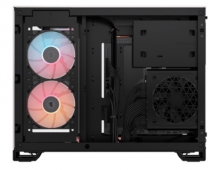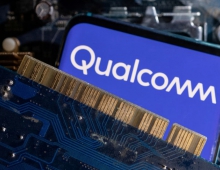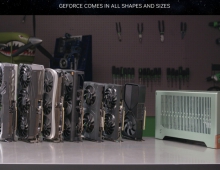
World's First ARM-based Supercomputer to Launch in Barcelona
The Barcelona Supercomputing Center (BSC) - Spain's national supercomputing facility - made big news today in the supercomputing world, by announcing plans to build the world's first ARM-based supercomputer.
BSC is planning to build the first ARM supercomputer, accelerated by Nvidia CUDA GPUs, for scientific research. This prototype system will use NVIDIA's quad-core ARM-based Tegra 3 system-on-a-chip, along with NVIDIA CUDA GPUs on a hardware board designed by SECO., to accelerate a variety of scientific research projects.
In their search for more energy efficient architectures in supercomputers, BSC concluded that typical x86-based CPUs in today's supercomputers consume up to 40 percent of the system's total power. They've also realized that ARM CPUs are much more energy-efficient than x86 CPUs from Intel and AMD.
ARM's superior energy efficiency can be traced back to the origins of the ARM architecture. While ARM was originally designed for extremely small and low power embedded devices, Intel and AMD x86 CPUs were always trying to make the Windows operating system run faster with little consideration for power consumption.
BSC is using the NVIDIA GPU to accelerate supercomputing applications on the ARM-based Tegra 3.
Supercomputers are becoming increasingly capped by power. Extreme scale supercomputers (petascale, exascale) are required for advancing science and technology, but the power consumption of these systems has already reached the 10 megawatt to 20 megawatt range. This means one of today?s larger supercomputers will use as much power as a small town. This rate of power consumption is not sustainable.
To continue making advances in science and technology, we have to continue to build higher performance supercomputers without increasing power. The supercomputing and high performance communities are investing in heterogeneous systems as the path forward for these large supercomputers.
In their search for more energy efficient architectures in supercomputers, BSC concluded that typical x86-based CPUs in today's supercomputers consume up to 40 percent of the system's total power. They've also realized that ARM CPUs are much more energy-efficient than x86 CPUs from Intel and AMD.
ARM's superior energy efficiency can be traced back to the origins of the ARM architecture. While ARM was originally designed for extremely small and low power embedded devices, Intel and AMD x86 CPUs were always trying to make the Windows operating system run faster with little consideration for power consumption.
BSC is using the NVIDIA GPU to accelerate supercomputing applications on the ARM-based Tegra 3.
Supercomputers are becoming increasingly capped by power. Extreme scale supercomputers (petascale, exascale) are required for advancing science and technology, but the power consumption of these systems has already reached the 10 megawatt to 20 megawatt range. This means one of today?s larger supercomputers will use as much power as a small town. This rate of power consumption is not sustainable.
To continue making advances in science and technology, we have to continue to build higher performance supercomputers without increasing power. The supercomputing and high performance communities are investing in heterogeneous systems as the path forward for these large supercomputers.





















